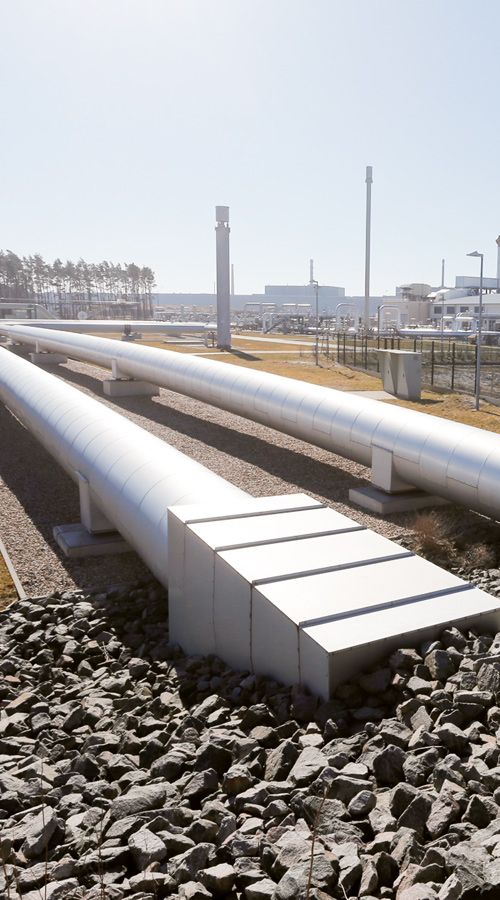Nord Stream: 400 billion cubic metres of natural gas transported to Europe


The Nord Stream pipeline across the Baltic Sea has been supplying Europe with natural gas for around ten years. The pipeline has now reached an important milestone: 400 billion cubic metres of natural gas have flowed through the pipeline since the first string commenced operation in November 2011.
“Nord Stream is contributing to a secure, reliable and energy-efficient energy supply in Germany and Europe. The pipeline transports natural gas along the shortest supply route from the gas fields in the north of Russia to Europe, and ensures that industry, private households and public institutions get the energy and heating they need,” says Thilo Wieland, Wintershall Dea’s Executive Board member responsible for Russia, Latin America and Gas Transport. Europe’s leading independent gas and oil company, based in Kassel and Hamburg, has a 15.5 per cent stake in operating company Nord Stream AG.
The Nord Stream pipeline constitutes an important building block for diversifying supply routes, and therefore makes a decisive contribution to supply security in Europe. The decline in the domestic gas production in Europe and the additional gas demand resulting from the nuclear and coal phase-out in Germany have created a supply gap, which is closed by the continuous and stable supply of natural gas via Nord Stream, among others. And the need is growing: energy consumption in Europe has risen steadily since 2014. In Germany alone, around 99 billion cubic metres of natural gas were consumed in 2019. In Europe, this totalled around 554 billion. The total amount of natural gas that Nord Stream has transported to Europe since 2011 could thus supply European consumers for almost nine months.
“Natural gas is not only one of the most important energy sources for all aspects of life, it’s also one of the cleanest. And it has a future! Europe has set itself ambitious climate targets. To achieve these, natural gas is needed. It’s reliable, it’s cost-effective and, as a source for producing hydrogen as the energy of the future, it is an important mainstay for the energy transition,” says Mario Mehren, CEO of Wintershall Dea.
Since the commissioning of Nord Stream’s second pipeline string in October 2012, the utilisation of the pipeline has steadily increased. The pipeline’s annual design capacity amounts to 55 billion cubic metres of natural gas. This is enough to supply around 26 million households in Europe with natural gas for an entire year.
Over a length of 1,224 kilometres and via two parallel strings, the Nord Stream pipeline connects the gas reserves in the Siberian fields Yuzhno-Russkoye and Bovanenkovskoye directly with Germany. The pipeline’s starting point in Russia is the city of Vyborg. Via Nord Stream, the natural gas arrives in Germany in Lubmin near Greifswald. From there, the natural gas is transported to other European countries. The OPAL and NEL pipelines connect Nord Stream with the existing European gas pipeline system. While OPAL’s 472-km route runs from Nord Stream’s landfall point in Lubmin near Greifswald further south to Brandov in the Czech Republic, NEL’s 441-km route runs from Mecklenburg-Western Pomerania till Lower Saxony.
Nord Stream is operated by Nord Stream AG, an international consortium established to plan, build and operate the pipeline. In addition to Wintershall Dea, four other shareholders are involved in the project. These are Gazprom International Projects LLC (a subsidiary of PJSC Gazprom, 51 per cent), PEG Infrastruktur AG (a PEGI/E.ON subsidiary, 15.5 per cent), N.V. Nederlandse Gasunie (9 per cent) and ENGIE (9 per cent).
Press Contact


Friedrich-Ebert-Straße 160
34119 Kassel
Germany


